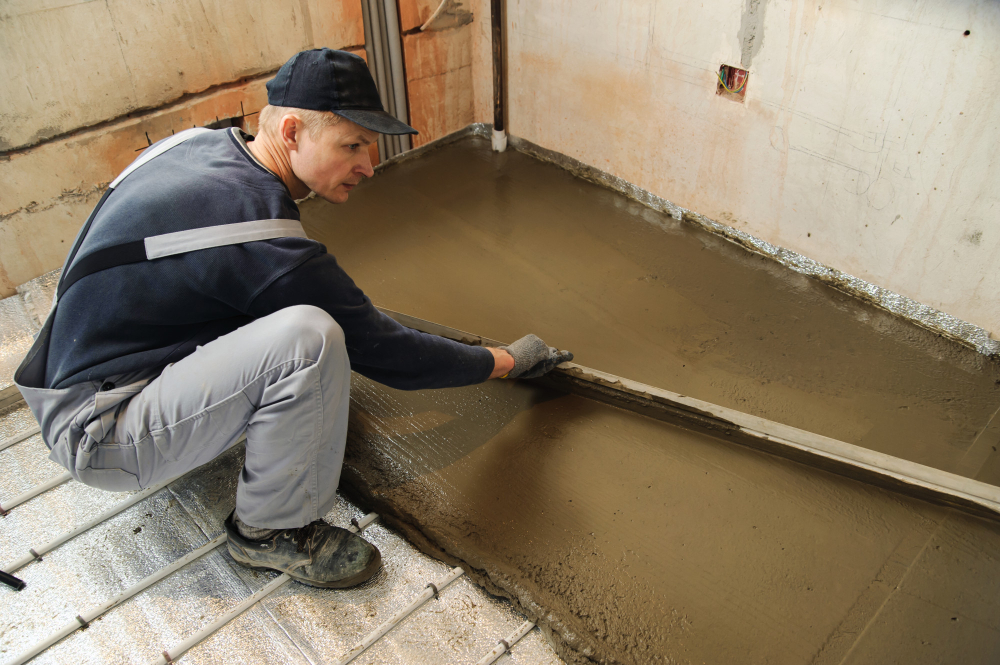
Mold and mildew in your basement can be more than just an unsightly problem; they can cause structural damage to your home and pose serious health risks. The key to preventing mold growth lies in controlling moisture, and one of the most effective strategies for achieving this is through Basement Waterproofing in St Louis. This blog will explore how waterproofing can protect your basement, prevent mold, and ensure a healthier living environment.
Understanding the Mold Threat
Before diving into waterproofing, it’s important to understand why mold thrives in basements. Basements are naturally prone to dampness due to their underground location, which makes them susceptible to water intrusion through foundation cracks, porous concrete, and inadequate drainage. Mold and mildew require moisture to grow, making damp basements the perfect breeding ground.
The Role of Waterproofing
Waterproofing acts as an impenetrable moisture barrier, preventing water from seeping into your basement. By keeping the environment dry, waterproofing deprives mold and mildew of the moisture they need to thrive. Effective waterproofing not only prevents mold growth but also helps maintain the structural integrity of your basement.
Key Waterproofing Techniques
Several waterproofing methods can be employed to protect your basement from moisture and mold:
1. Interior Waterproofing: Interior waterproofing focuses on controlling moisture from inside the basement. Common techniques include:
-
Waterproof Paints and Coatings: Applying waterproof paint or coatings to basement walls can help seal out moisture. These products are designed to create a barrier that prevents water from penetrating the walls.
-
Interior Drainage Systems: Installing interior perimeter drains, such as French drains, can collect water that seeps through the walls and redirect it to a sump pump for removal.
-
Sump Pumps: Sump pumps are essential for removing water that accumulates in the basement. They are typically installed in a sump pit and automatically pump water out of the basement, preventing flooding and moisture buildup.
-
Sealants and Injections: Sealants and injections can be used to fill cracks in the foundation walls and prevent water from seeping through.
2. Exterior Waterproofing: Exterior basement waterproofing involves excavating around the foundation and applying a waterproof coating or membrane to the outside of the walls. This method provides a comprehensive barrier against water intrusion.
-
Waterproof Membranes: These are applied to the exterior of the foundation walls to prevent water from entering the basement.
-
Foundation Wall Wrap: A wall wrap installed around the foundation provides an extra layer of protection against moisture.
-
Exterior Drainage Systems: These systems help to redirect water away from the foundation, reducing the amount of moisture that can penetrate the basement.
Steps for Effective Mold Prevention Through Waterproofing
1. Inspect the Area: Regularly inspect your basement for signs of water damage, such as damp spots, cracks, and mold growth. Pay close attention to areas where water is likely to enter, such as around windows, pipes, and foundation walls.
2. Identify and Address the Source of Moisture: Determine the source of excess moisture in your basement. This could be due to leaky pipes, poor drainage, foundation cracks, or high humidity levels. Repair any leaks and address any drainage issues to prevent water from entering the basement.
3. Improve Ventilation: Proper ventilation is crucial for reducing moisture buildup in the basement. Install exhaust fans to expel moist air and decrease humidity levels. When weather permits, open basement windows to allow fresh air to circulate.
4. Ensure Proper Insulation: Adding insulation to basement walls can reduce temperature differences that cause condensation. Use vapor barriers with insulation to keep moisture out and maintain a dry environment.
5. Use Dehumidifiers: A good dehumidifier can help dry out your basement and create an environment that is inhospitable to mold growth.
6. Professional Waterproofing: Consider hiring a professional waterproofing company to assess your basement and recommend the appropriate waterproofing solutions. Professionals can identify potential problems and provide effective, long-lasting solutions.
Benefits of Basement Waterproofing
-
Prevents Mold Growth: By keeping your basement dry, waterproofing prevents mold and mildew from growing.
-
Protects Structural Integrity: Waterproofing helps prevent water damage to your foundation, which can compromise the structural integrity of your home.
-
Improves Air Quality: Reducing moisture levels in your basement can improve the overall air quality in your home. Mold and mildew can release spores into the air, which can cause respiratory problems and other health issues.
-
Increases Energy Efficiency: Waterproofing basement walls from the inside can help reduce moisture levels, leading to lower energy costs as your HVAC system doesn’t have to work as hard to maintain a comfortable temperature6.
-
Extends the Lifespan of Your Floors: Moisture can damage basement floors over time, but waterproofing can help prevent this damage and extend their lifespan.
-
Reduces Flood Risk: Waterproofing helps prevent water from seeping into your basement, reducing the risk of flooding and the resulting damage to your property.
Conclusion
Waterproofing is a critical step in preventing mold growth and protecting your basement from water damage. By implementing effective waterproofing techniques, you can create a dry, healthy, and structurally sound basement that adds value to your home. If you’re concerned about mold or moisture in your basement, consider investing in professional Basement Waterproofing in St Louis to safeguard your home and family.